Benzin Scooter -
Tuning instructions
43/49cc Mach1 Gas Scooter Performance Carburetor Kit Walbro WT-603/668…
Mounting Instruction
Step 1
Dismantle the old air filter, and carburettor the intake manifold.
Remove the delays of the old seal at the engine block now and went the first seal on the Cylinder
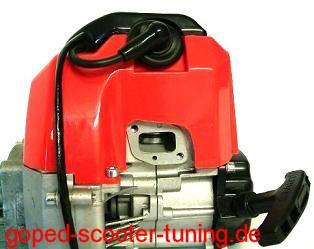
Step 2
Mount the spacer between Cylinder and Intake with the gaskets and with the two bolts
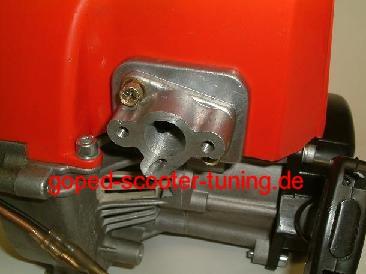
Step 3
Put a seal between the Walbro Carburetor and the Gas Cabel Holder, after this again a seal between the Gas Cable Holder and the Air Filter Intake

Step 4
The Mach1 Gas Scooter Racing Carburetor Kit can mount at the intake manifold with the two screws now.
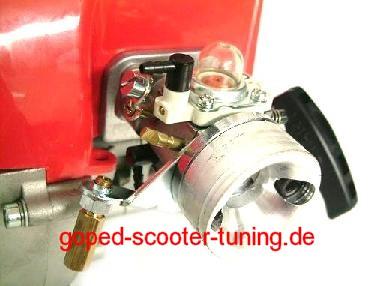
Step 5
Put the Gas Rope by the spring and put it on the Walbro Carburetor. They can the petrol tube start to mount now. The black fuel line is the back to tank fuel line. Please look in your tank on with fuel line is the fuel filter mounted and this you mounted on the carburetor above. On the picture is this the yellow fuel line. Mounting the RC Racing Air Filter on the Velocity Stack and attract him.
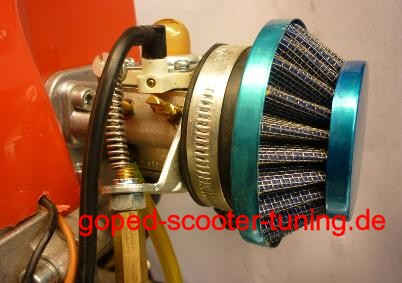
Step 6
Now being the Choke Lever at the Throttle Shaft from the Walbro WT Carburetor
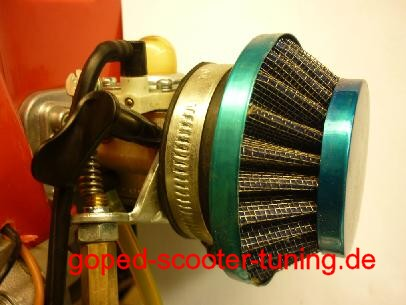
How should I adjust the jets on a Walbro Carburetor (WA-167 / WT-603 / WT-668 / WT-257 / WT-813, etc)?
These carburetors require regular adjustment to ensure peak performance, and also to avoid an unsafe lean condition, which can prematurely damage your engine. If you find your top-end RPM's have fallen off a bit, or if you experience lagging or surging, it is probably time to re-adjust the carb jets. To ensure max performance and engine life, follow this procedure:
- Locate the low and high RPM jets on the side of the carb - they are usually marked with a L and a H. Turn both jets completely CLOCKWISE ( to the fully closed position).
- Rotate the Low jet counter-clockwise to 1 and 1/4 turns open.
- Rotate the High jet counter-clockwise to approx 1 and 3/8 turns open.
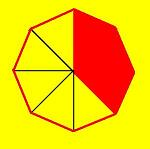
- Now, start the engine. You may need to turn the Low jet slightly one way or the other for the engine to start.
- Adjust the Low jet as desired until the idle is where you like it. Turning clockwise ("CLOSING" THE JET) will produce a higher idle, and counterclockwise ("OPENING" THE JET) will produce a lower idle (and eventually flood and the engine will kill, if you turn it too far).
- Open the throttle lever to full blast. Adjust the High jet until you get maximum RPMs. Note: this will probably be REALLY LOUD. Listen for the highest-pitched whine to tell you where max RPMs are hit.
AFTER YOU FIND THE MAX RPM SETTING, TURN THE HIGH JET COUNTER-CLOCKWISE ("OPEN" THE JET) APPROX 1/16TH OF A TURN TO ENSURE YOU HAVE SUFFICIENT GAS/OIL MIX TO COOL THE ENGINE PROPERLY.
Note: The above are just general guidelines. You may need to adjust both the H and L screws once you begin riding, depending on engine loading, altitude, humidity, etc. The trick is to find settings that work well for you, and stick with them.
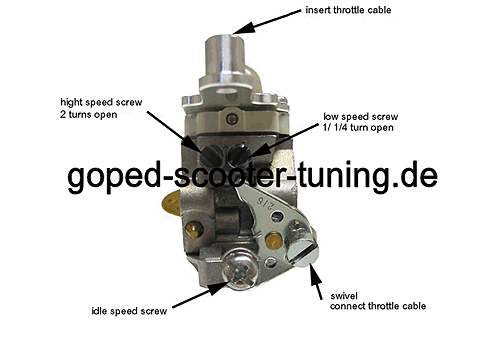
Here is some helpful information regarding common carburetor tuning problems:
If your engine stutters at full throttle and cannot reach full RPMs:
The high jet is too far open. Close the jet by turning it clockwise slightly, and then ride-test. If no improvement, repeat until desired results are achieved. Once you have found a workable setting, open the jet approx 1/16 of a turn to ensure sufficient fuel/air mix.
If your engine bogs out when transitioning from low speed:
The high jet is too far closed. Open the jet by turning it counter clockwise until you are at least 1 1/2 turns open, and then gradually close the jet until performance is as desired. Poor engine compression, blocked exhausts, and very heavy engine loading can all also cause bogging.
If your engine idles very fast and kills if you attempt to slow the idle:
You may have an air leak in your intake. An easy way to check for leaks is to spray the intake manifold and area surrounding it with WD-40. If the idle changes after you spray the WD-40, there is an air leak. Common areas for leaks are between the manifold and the cylinder, and between the carb and the intake manifold. Inspect the manifold, carb gasket, and intake gasket for cracks or other signs of damage, and replace if necessary.
If your engine idles but then slowly kills:
Your low jet is too far open. Close the low jet by turning it clockwise until a stable idle is achieved.








